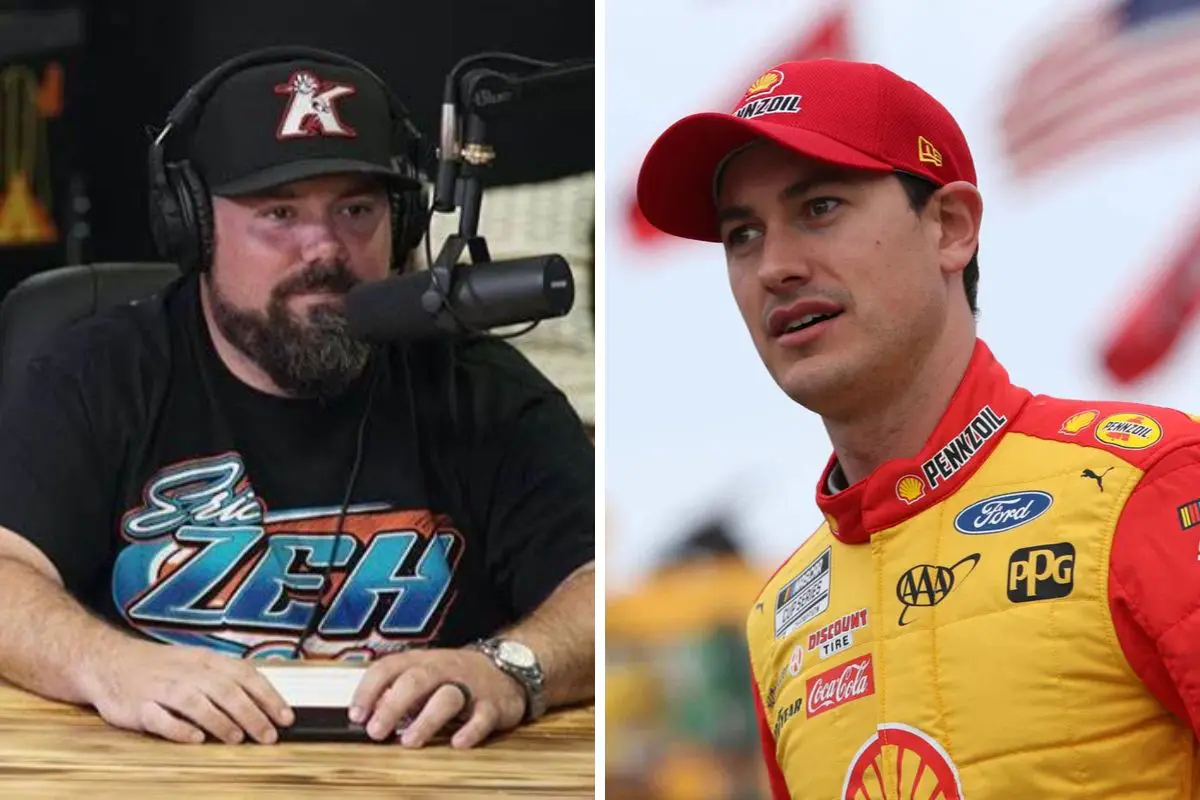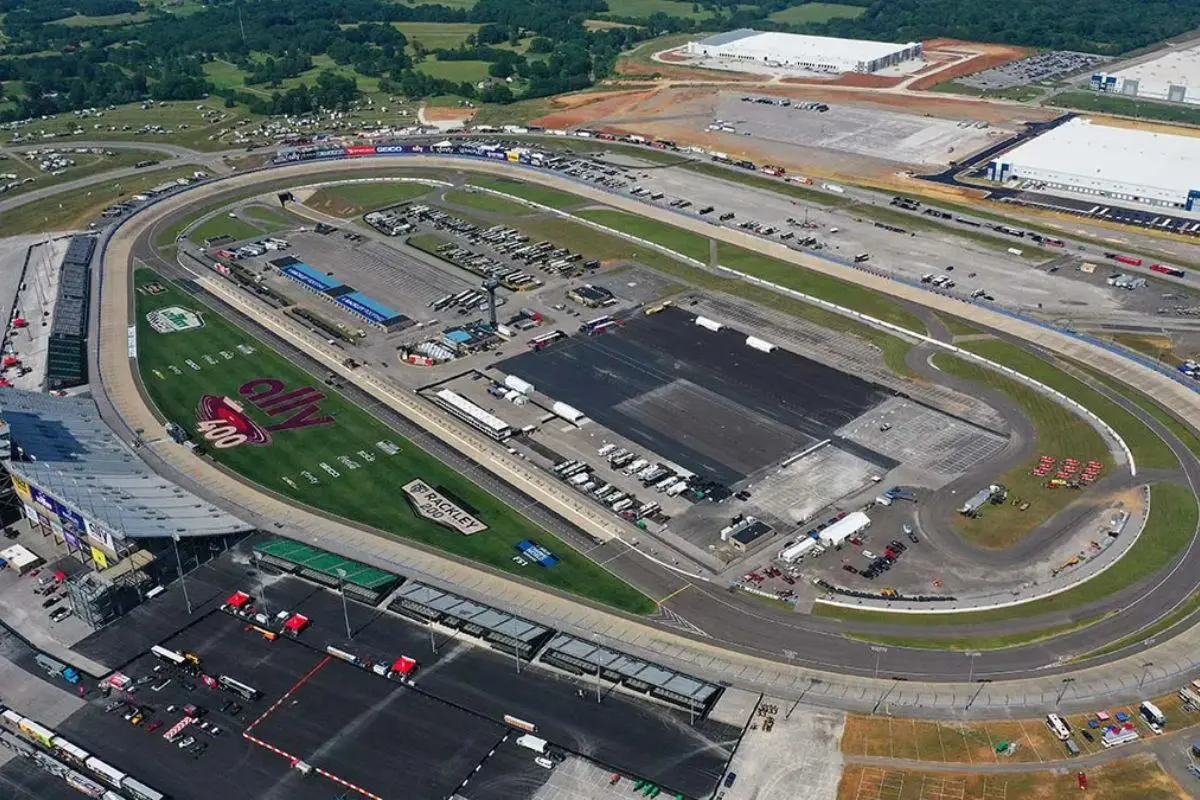Freddie Kraft’s Issues Stark Warning to Joey Logano: Freddie Kraft’s admonition to Joey Logano raises critical questions about accountability within NASCAR’s competitive framework, particularly concerning the enforcement of the Double Yellow Line Rule. Kraft argues that inconsistent application of penalties hampers the fairness of the sport and risks eroding the trust drivers and fans place in its governance. As he highlights the potential consequences of inaction, the discussion surrounding who should face repercussions becomes increasingly pertinent. What implications might this have for the credibility of NASCAR, and could it signal a broader crisis within the sport’s regulatory practices?
Key Highlights
- Freddie Kraft emphasizes the need for consistent penalties in NASCAR to maintain fairness and integrity within the sport.
- He calls attention to disparities in penalty enforcement, specifically regarding Joey Logano’s actions compared to other drivers.
- Kraft highlights the importance of considering driver intent when determining penalties for rule violations.
- He argues that accountability should be directed at both the initiator and executor of infractions to ensure fair competition.
- The lack of consistent rule enforcement risks eroding trust among fans and drivers, threatening NASCAR’s credibility.
Double Yellow Line Rule
The Double Yellow Line Rule serves as a critical safeguard in the NASCAR superspeedway racing, particularly at iconic tracks like Daytona and Talladega. Implemented in 2001 following the tragic death of Dale Earnhardt during the Daytona 500, this rule was designed to improve safety by restricting drivers from making risky maneuvers that could lead to devastating accidents.
The narrow configuration of these tracks necessitates stringent regulations, as drivers often find themselves in precarious positions while attempting to overtake competitors. The essence of the Double Yellow Line Rule is that any driver who crosses the double yellow line while attempting to gain position is subject to penalties.
This regulation serves not only to protect the drivers but also to guarantee the safety of fans, whose well-being is paramount. Historically limited to Daytona and Talladega, the rule has recently extended to Atlanta Motor Speedway, highlighting the increasing recognition of the potential dangers inherent in superspeedway racing.
The rule’s enforcement has sparked discussions regarding its application, particularly in high-pressure situations where the competitive instinct can lead to boundary-testing actions. For instance, when Joey Logano navigated Daniel Suarez beneath the line to secure a lead, it raised questions about the integrity of the rule and its consistent enforcement.
As NASCAR continues to evolve, the Double Yellow Line Rule remains a cornerstone of efforts to promote a safer racing environment, emphasizing the delicate balance between competition and safety on the track.
Debate Around the Double Yellow Line Rule
Controversy surrounding the enforcement of the Double Yellow Line Rule has intensified, particularly in the context of recent races that have drawn comparisons between different incidents involving drivers. The disparity in penalties for similar infractions has led to questions about NASCAR’s consistency and fairness in rule enforcement.
One notable incident occurred during the 2018 Xfinity Series Firecracker 250 at Daytona, where Justin Haley was stripped of his victory after one tire crossed the inner yellow line while overtaking. In clear contrast, Joey Logano faced no consequences for a similar action at the Quaker State 400, resulting in his race win and automatic qualification for the Round of 12.
Freddie Kraft’s assertion that there is a clear difference in intent between the two situations emphasizes the complexity of applying the Double Yellow Line Rule. Fans and analysts similarly are urging NASCAR to clarify its guidelines to guarantee that drivers are held to the same standards, thereby maintaining the integrity of the sport. The ongoing debate raises critical questions about accountability and fairness in racing.
“There was definitely a difference between the 2 of them. Haley threw a block and drove his car below the line to block, Reddick I think it was. And that should’ve been a penalty. That’s 100% cut and dry penalty.” – Kraft
Freddie Kraft’s Analysis and Argument
How can the subtleties of driver intent greatly impact the interpretation of NASCAR’s rules? In the domain of competitive racing, the intricacies of a driver’s actions can influence not only the race outcome but also the enforcement of rules. Freddie Kraft’s analysis of the recent penalties highlights this complexity, particularly in the cases of Joey Logano and Daniel Suarez.
Joey doesn’t throw as egregious of a block. He moves down, and throws a block, but he still leaves three-quarters of a car width to a half car width to the line. Daniel proceeds to go below the line and pass him and blend up…somebody needs to be penalized there.” – Kraft
Kraft differentiates Logano’s navigation from Suarez’s by emphasizing the intentionality behind their actions. He argues that Logano’s blocking was less egregious, as he maintained a margin of space—a significant detail that aligns with NASCAR’s regulations. Logano’s decision to move down the track while leaving a quarter to half car width suggests a calculated move rather than an outright aggression that would warrant punitive measures.
In contrast, Kraft implies that Suarez’s actions, which involved going below the line, were precipitated by a more aggressive approach from Logano, thereby creating a scenario that could lead to a wreck.
This distinction raises important questions about accountability in racing. As Brett Griffin, spotter for Bubba Wallace, posits, Suarez’s decision to descend below the line was a defensive tactic, indicating that not all actions taken in the heat of competition are equivalent.
“Daniel held his line; he would have caused a wreck.” – Griffin
Consequently, Kraft’s assertion that “somebody needs to be penalized” emphasizes the necessity for NASCAR to evaluate the intent behind driver actions, fostering a more intricate application of their rules and ensuring fair competition.
Discussion on Fault and Enforcement
In the domain of competitive racing, determining fault often hinges on subtle interpretations of driver behavior and adherence to NASCAR’s regulations. The recent incident involving Joey Logano and Daniel Hemric exemplifies the complexities inherent in adjudicating racing conduct. Freddie Kraft’s commentary highlights the ambiguity surrounding the actions of both drivers.
“I don’t know who, you could argue to the end of the day which one. I don’t think Joey’s block, Joey didn’t drive down below the line like Haley did. But he definitely moved to the left, blocked Daniel, Daniel goes below the line to pass him. There’s got to be a penalty there somewhere.” – Kraft
While Kraft noted that Logano did not drive below the line, he acknowledged that Logano’s leftward movement effectively obstructed Hemric, prompting Hemric to make a controversial decision to pass below the line.
TJ Majors further complicates the discourse by introducing the dichotomy of accountability: either the driver who initiated the action or the one who executed it. This perspective reveals an important aspect of racing enforcement—culpability can often be a shared burden.
“I mean, someone’s going below the line, it’s either, (a) Like you say, the guy that put him there, or (b) The guy that just drove down there. So, I do agree that someone probably should have (been penalized).” – Majors
The implication that penalties must be levied to maintain integrity within the sport resonates strongly; without enforcement, the competitive balance can be jeopardized.
The debate surrounding who deserves sanctioning raises critical questions about NASCAR’s regulatory framework. Is it sufficient to penalize only those who commit the overt foul, or should the broader context of the situation dictate penalties?
The racing community must grapple with these questions to foster a culture of responsibility among drivers. Ultimately, the enforcement of penalties is not merely a matter of adhering to rules but a crucial element in preserving the spirit of fair competition in motorsport.
NASCAR’s Double Yellow Line Rule
Although the enforcement of NASCAR’s Double Yellow Line (DYL) rule is designed to guarantee fair competition, its application often raises questions about consistency and judgment. The DYL rule explicitly states that vehicles must race above the double yellow lines, and any vehicle crossing beneath them to improve its position risks being black-flagged. Moreover, any driver who forces an opponent below these lines may face similar repercussions. This clear directive aims to maintain order and safety on the track, yet its enforcement has frequently been a source of dispute.
“Vehicles must race above the double yellow lines around the entire race track. If in NASCAR’s judgment, the vehicle(s) goes beneath the double yellow lines to improve its position, vehicle(s) will be black-flagged. If in NASCAR’s judgment, a vehicle forces another vehicle beneath the double yellow lines (in an effort to stop the advancement/pass) the vehicle may be black-flagged.
NASCAR defines beneath the double yellow lines as follows: when the vehicle’s left side tires are beneath the left line of the inside double yellow lines that separate the apron from the racing surface while passing another vehicle.” – As per NASCAR’s book
Recent events, particularly in Atlanta, highlight the necessity for NASCAR to apply the DYL rule uniformly. Deviating from established protocols compromises the integrity of the sport and diminishes the principle of fairness. As Freddie Kraft noted, allowing certain infractions to go unchecked while penalizing others creates an inconsistent playing field where clear boundaries are not respected.
You can’t call it out of bounds and then not enforce it, because they are out of bounds.” – Kraft
The DYL rule is not merely a guideline; it is a cornerstone of competitive racing that must be upheld without discretion. The challenge lies not in the rule itself but in NASCAR’s commitment to its enforcement. If the organization aims to maintain credibility, it must prioritize consistent application across all situations.
Failure to do so risks alienating drivers and fans in the same way, eroding the foundation of trust that is fundamental for any sport. Ultimately, NASCAR must affirm that rules are not only established but enforced, reinforcing the principles of fair competition that define the essence of racing.
News in Brief: Freddie Kraft’s Issues Stark Warning to Joey Logano
Inconsistent enforcement of NASCAR’s rules, particularly the Double Yellow Line Rule, raises considerable concerns regarding the integrity of the sport. Freddie Kraft’s insistence on accountability highlights the necessity for uniform penalties to guarantee fair competition. Failure to address discrepancies not only undermines trust among drivers and fans but also hampers the long-term credibility of NASCAR. Consequently, it becomes imperative for the organization to implement consistent rule enforcement to preserve the sport’s viability and uphold its competitive standards.
ALSO READ: Joey Logano and Ryan Blaney’s Overtime Victory: How Penske Conquered Trackhouse at Atlanta




